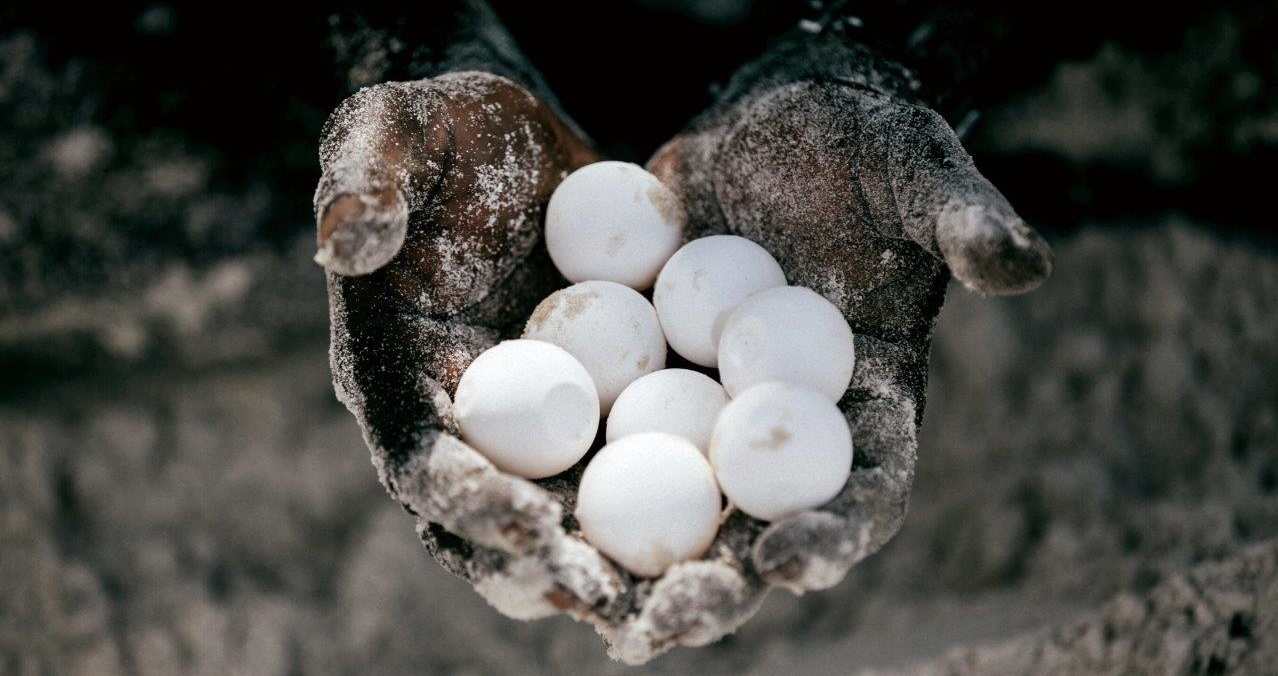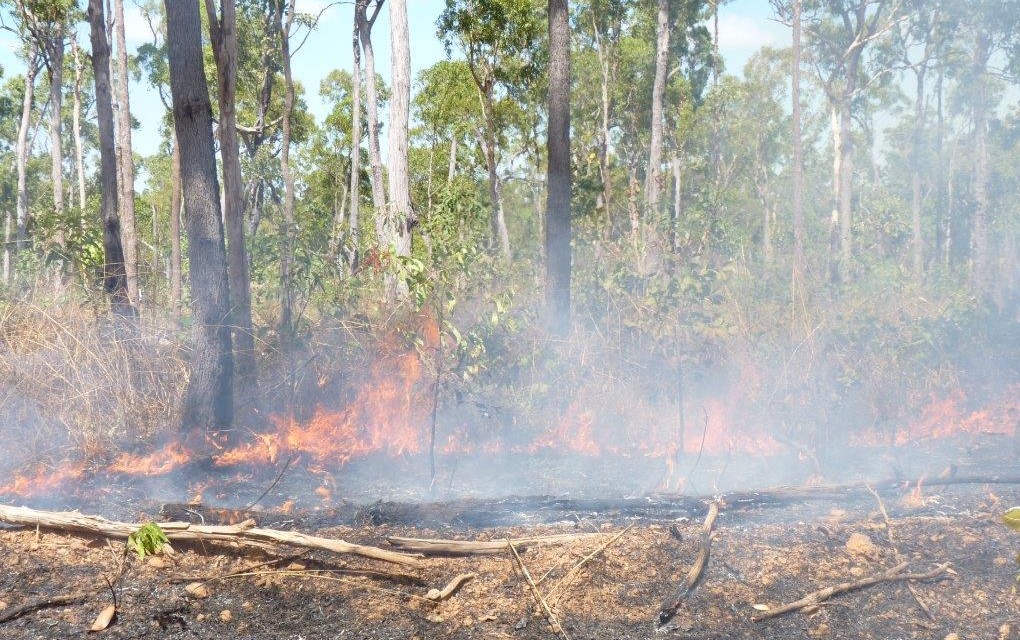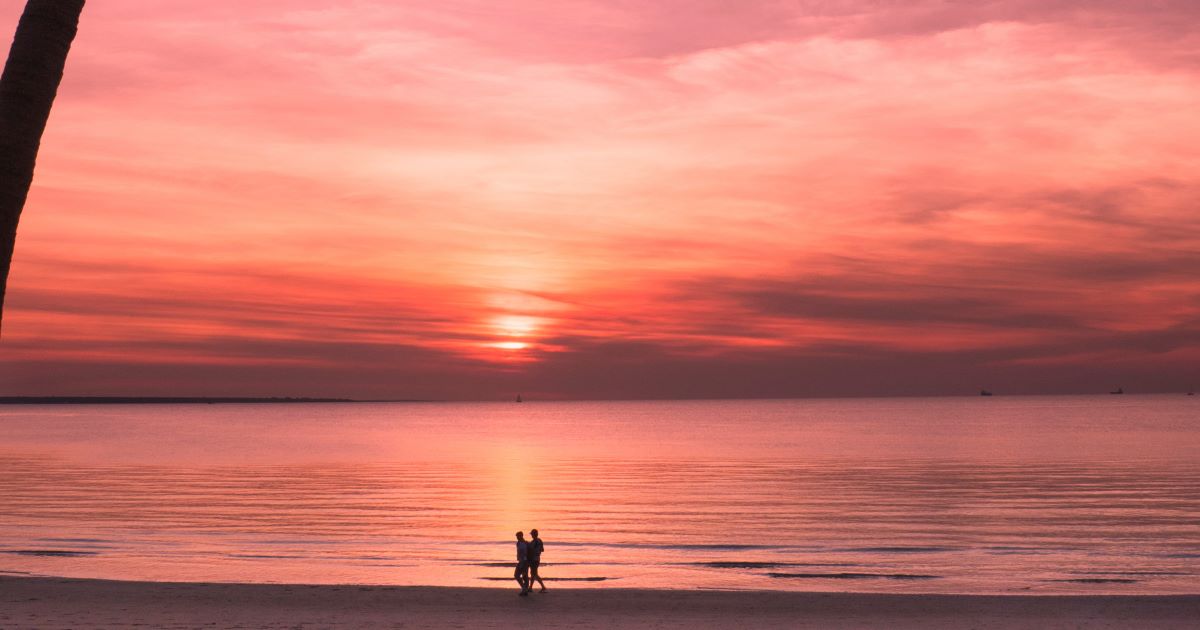Yekke season - it's a great time to visit Darwin & Kakadu
Posted on 29 May, 2020 in KakaduSpectacular Darwin sunsets, fuelled by seasonal burns
Distant smoke haze hovers over the ocean as the sun sets to create bands of firey reds and oranges. The Territory is home to daily stunning sunsets, but the annual ‘burn offs’ in May & June make these extra special evening skies, it's one of the best times to visit Darwin.
The 1st of May marks the official start of the 'dry season' in the Top End but for the local Indigenous people it's mother nature who dictates the seasons here. The traditional owners of the Kakadu region recognise six seasons, based on thousands of years of knowledge being passed down through generations. These seasons are identified by changes in the environment, for example certain plants and trees flowering, coincide with particular animals breeding or laying eggs. This is one of the things that make the NT special, it's rich in the worlds’ oldest living and existing culture, here it is part of everyday life.

Every year annual rainfall levels differ greatly, and therefore the environment reacts accordingly. Huge wet seasons, mean lush green landscapes bursting with activity and life, and waterfalls are a spectacular sight and last well into the dry season. River levels will be higher and crossings may be delayed. Alternatively, lower levels of seasonal rains will allow earlier openings and enjoyment of national parks will be more accessible throughout the year. Going on a Kakadu National Park tour at different times of year could almost be unrecognisable; it really is a park that’s worth visiting twice to experience the huge variations for yourself.
Mother nature plays a big part, and now is the time when the dragonflies are upon us and the Darwin Woolybutt (eucalyputus miniata) comes into flower, producing vivid flashes of orange in amongst the green bush. This signals the start of the controlled burns across the land. The method of ‘patchwork’ burning, has been practised by Indigenous people for thousands of years, and to maintain this land management, is crucial in not only the culture and regeneration of land, but also to avoid uncontrollable fires that can result in devastating loss.

If you travel through remote areas this time of year, it’s not uncommon to experience a ‘burn off’ and initially it can be a bit daunting for some that are unfamiliar. By regularly burning, normally on an annual basis, the fires are deemed ‘cool burning’ due to only having twelve months of potential dry debris. They move slowly, allowing animals to move on and don’t get so hot they avoid killing vegetation. The native bush rejuvenates and green shoots can be seen only days after, providing a rich food source for the animals. New growth is encouraged and a selection of flora have even adapted, and now require these hot temperatures to germinate. Travelling through these burnt ancient lands, is a sight to behold. Not that of desolation, but in awe of the innovative ways our indigenous ancestors have cared for the land. Cool nights, early morning mist, floodplains carpeted by lilies. This is Yekke season.
When's the best time to visit Darwin & Kakadu?
Yekke is a great time to visit both Darwin & Kakadu. In the National Park many sites have now opened after the wet-season, it's still green, the waterfalls are flowing and the masses are yet to arrive. Darwin and surrounds are similar and it's like to explore these regions before the school holiday in late-June begin and things get busy. That's why we think May and June are some of best times to visit the Top End of the Northern Territory.
For more information about the best time to visit Darwin and Kakadu or to join us on a tour please contact us on (08) 89275500 or email us here.
© 2014 Venture North | ABN: 34 142 533 113 | Privacy Policy | Terms & Conditions
Darwin Web Design by Dash Media



